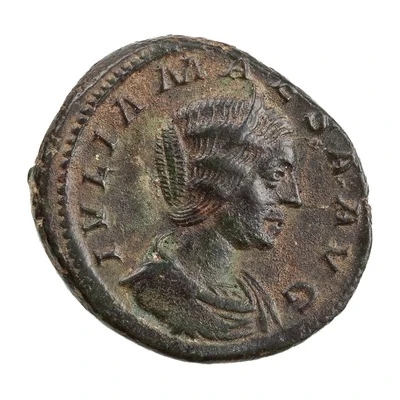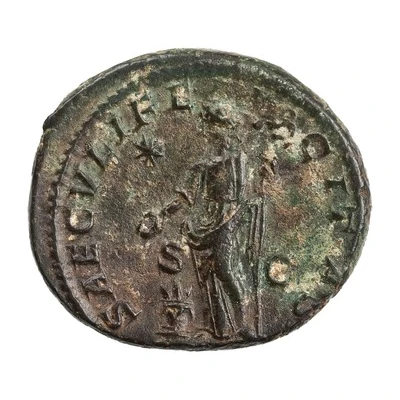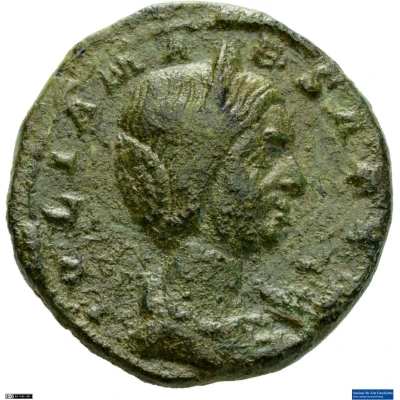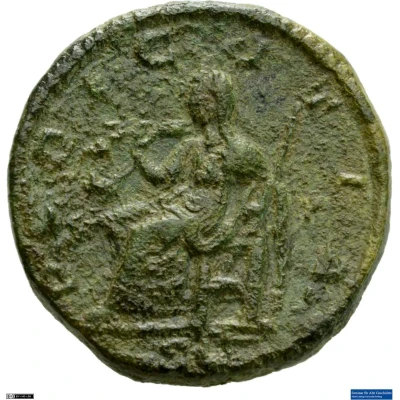


© American Numismatic Society (ANS)
Dupondius - Julia Maesa SAECVLI FELICITAS S C; Felicitas
| Bronze | 10.5 g | 28 mm |
| Issuer | Rome › Roman Empire (27 BC - 395 AD) |
|---|---|
| Emperor | Elagabalus (Sextus Varius Avitus Basianus) (218-222) |
| Type | Standard circulation coin |
| Years | 218-222 |
| Value | Dupondius (1⁄16) |
| Currency | Antoninianus, Reform of Caracalla (AD 215 – 301) |
| Composition | Bronze |
| Weight | 10.5 g |
| Diameter | 28 mm |
| Shape | Round (irregular) |
| Technique | Hammered |
| Orientation | Variable alignment ↺ |
| Demonetized | Yes |
| Updated | 2024-10-05 |
| Numista | N#277116 |
|---|---|
| Rarity index | 100% |
Reverse
Felicitas, draped, standing left, sacrificing out of patera in right hand over lighted altar and holding caduceus in left hand.
Script: Latin
Lettering: SAECVLI FELICITAS S C
Unabridged legend: Saeculi Felicitas. Senatus Consultum.
Translation: Age of good fortune. Decree of the senate.
Comment
Mass varies: 10.42–10.5 g;Example of this type:
American Numismatic Society (ANS)
Source:
Online Coins of the Roman Empire (OCRE)
Interesting fact
One interesting fact about this coin is that it features an image of Julia Maesa, the grandmother of the emperor Elagabalus, who was known for her influence on Roman politics and her efforts to promote the cult of the sun god Elagabal. The coin's design, which includes the image of Julia Maesa and the inscription "SAECVLI FELICITAS S C," or "Felicitas of the Saeculum," reflects the importance of the Roman imperial family and the cult of the sun god during this time period.

